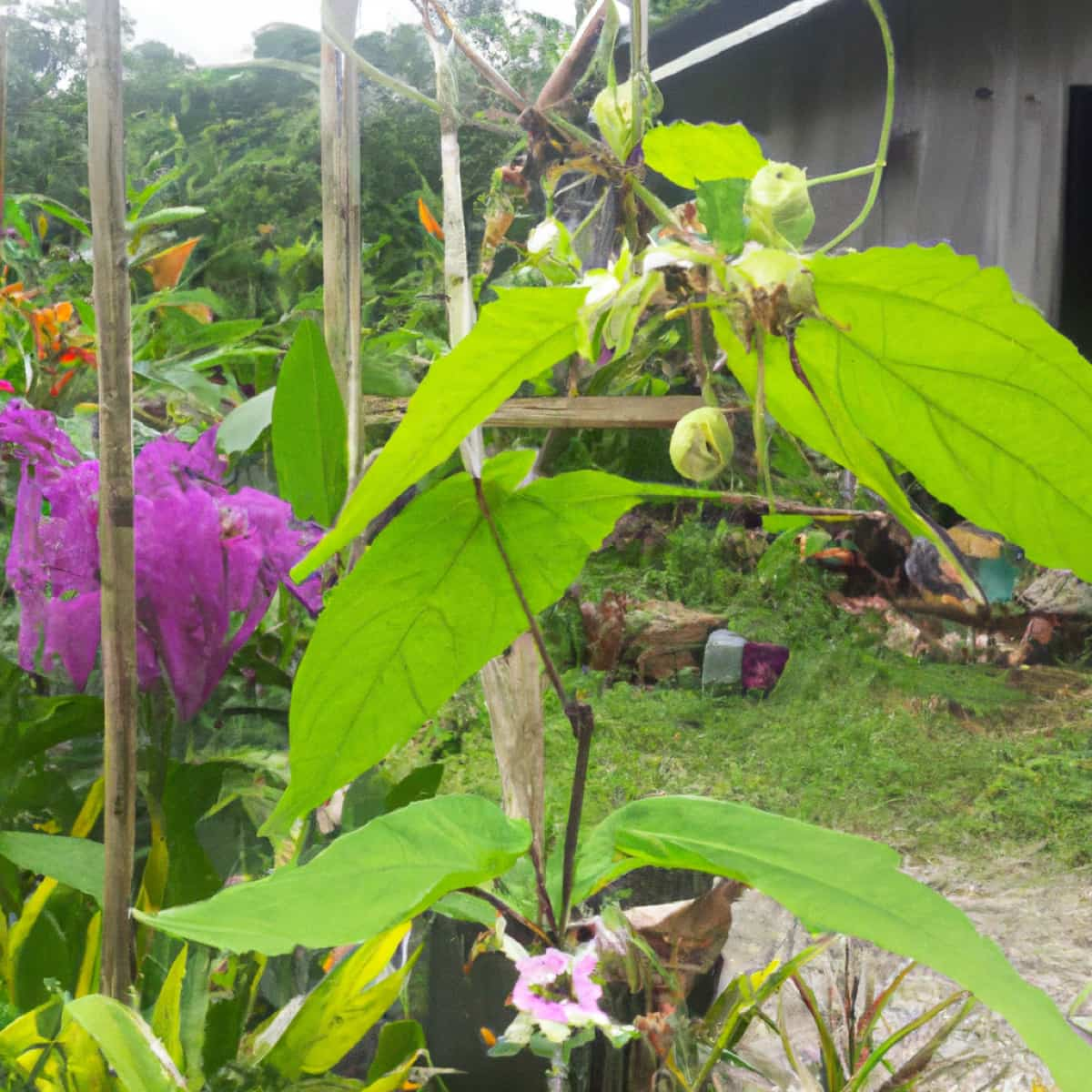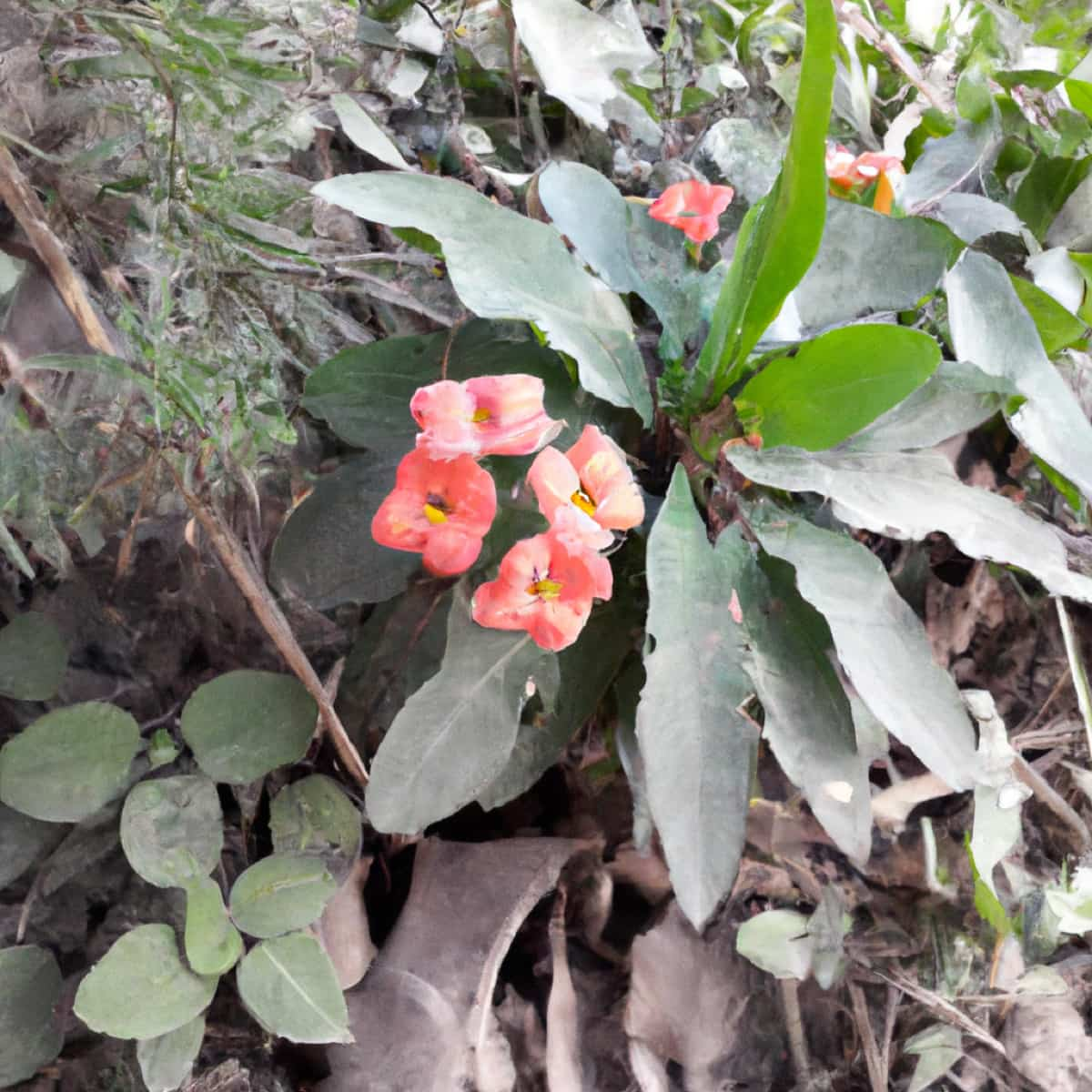Mask flowers are relatively easy to care for and low-maintenance plants. This beautiful flowering plant belongs to the Scrophulariaceae family and has 12 different species. The Mask Flower’s striking appearance makes it an excellent choice for borders or as an accent plant.

How to Grow and Care for Mask Flower Plants
Choosing the Right Location for Mask Flower Plant Growth
- Choosing the right location for Mask flower plant growth is crucial to their health and success.
- Choose an area that receives at least six hours of direct sunlight daily. These plants may not bloom as vibrantly without adequate light exposure or produce as many flowers.
- Good air circulation around your mask flower plants is crucial for preventing disease outbreaks and promoting healthy growth.
Optimal Soil Conditions for Healthy Mask Flower Plant Growth
The soil conditions play a crucial role in ensuring the healthy growth of Mask flower plants. These plants require well-draining, fertile soil with an optimal pH range between 6.1 to 7.8. If your garden’s soil is deficient in nutrients or has poor drainage, it can lead to stunted growth and weak blooms for your Mask flowers. To avoid this problem, add organic matter such as compost or aged manure before planting.
Propagation Methods of Mask Flowers
Propagating Mask flower plants can be done through cuttings or seeds. When using cuttings, take stem cuttings from the parent plant during its active growing period in late spring or early summer. Cut off a 3–4-inch piece of new growth and remove any leaves from the lower half of the cutting. Dip the end of the stem cutting into hormone powder before planting it in a pot filled with well-draining soil.
Keep the soil moist and place it in indirect sunlight until roots develop, usually within 2-3 weeks. Seeds can also be used for propagation. Sow seeds indoors in trays filled with seed starter mix and keep them warm and moist until they germinate, usually within 14-21 days. Once they have developed their true leaves, transfer them to individual pots or containers filled with potting soil.
Understanding Mask Flower Plant’s Water and Moisture Requirements
- Proper watering and moisture management are essential for healthy Mask flower plants. These plants prefer evenly moist soil, so it’s important to water them regularly but not let the soil become waterlogged.
- When planting Mask flowers, thoroughly saturate the root ball and surrounding soil with water. After that initial watering, monitor the plant’s moisture levels closely by checking the top inch of soil for dryness.
- Mask flowers require more frequent watering when evaporation rates are high during the hot summer. However, be careful not to overwater them, which can lead to other issues.
- If growing your Mask flowers in containers or pots, be especially mindful of their moisture needs. To maintain adequate moisture levels around your Mask flower plants without risking overwatering or underwatering them, consider using a drip irrigation or soaker hose.
Protecting Mask Flower Plants from Extreme Temperatures and Frost
Mask flower plants are sensitive to extreme temperatures and frost, so protecting them properly is essential. This will help insulate the plant roots and keep them warm during cold spells. If you live in an area that experiences harsh winters, consider growing your Mask Flowers in containers that can be moved indoors during colder weather. Keep the soil moist but not waterlogged, as overwatering can cause root rot.
In case you missed it: Dark Delights: The Enchanting Top 20 Black Flowers with Names

In areas with hot summers, provide shade for your Mask flowers by placing them under trees or using shade cloth. This will prevent sunburn and wilting caused by excessive heat. During extreme heat or drought, ensure adequate watering to moisten the soil. Avoid getting water on the leaves, which can lead to fungal diseases.
Mask Flower Plant Maintenance: Pruning and Deadheading Techniques
One essential aspect of maintaining plant health and vitality is pruning and deadheading. Plant pruning helps to maintain the shape and size of your plant while removing dead or diseased parts encourages new growth. When pruning Mask flower plants, using sharp and sterile tools is important to prevent damage or disease transmission. Start by cutting back any broken or damaged stems to promote new growth. You can also trim back any overgrown branches blocking light from reaching other areas of the plant.
Deadheading is another vital technique used in maintaining mask flower plants. It involves removing spent blooms before they develop seeds, which redirects energy toward producing more flowers instead of seed production. To do this, pinch off the faded flowers just above a set of leaves or buds. Deadheading regularly throughout the blooming season will encourage continuous flowering until late summer.
Identifying and Treating Pests and Diseases in Mask Flower Plants
- Mask flower plants are generally low maintenance, but like any other plant, they can still fall prey to pests and diseases. One of the most common pests that infest Mask flowers is spider mites. These tiny arachnids suck sap from leaves, causing them to turn yellow and eventually die. To get rid of spider mites, wash your plants with a hose or use an insecticidal soap.
- Another pest that can harm your Mask flower plants is aphids. You can spray the affected areas with neem oil or insecticidal soap to eliminate these pesky insects.
- Fungal diseases like powdery mildew can also be problematic for Mask flower plants. Immediately remove all infected plant parts and apply a fungicide solution to combat it.
- Root rot problem caused by overwatering or poor drainage is another problem you may encounter with your mask flower plant; it will lead to wilting foliage or the complete collapse of the entire plant because its root system will have been weakened by fungal activity in moist soil conditions. To keep your Mask flower healthy, regularly check for signs of problems so you can address them promptly before they become severe problems affecting overall health over time.
Seasonal Care Guide for Mask Flower Plants: Spring, Summer, Fall, and Winter
Spring is the perfect time to inspect your Mask flower plants for any signs of damage or disease after a long winter. Check for broken stems and dead leaves, and prune away any damaged areas. You can also start feeding and fertilizing your plants to encourage healthy growth. During summer, ensure your Mask flower plants get enough water and moisture. These plants prefer well-draining soil but still need consistent watering in hot weather. Deadhead spent blooms regularly to promote more flowers throughout the season.
As fall approaches, reduce watering as the temperatures begin to cool down. This will help to control fungal diseases that thrive in moist conditions. You can also consider adding mulch around the base of your Mask flower plant to protect it from cooler temperatures. In winter, cover your Mask flower plant with frost protection if you live where temperatures drop below freezing. Alternatively, move potted plants inside where they can be sheltered from harsh winter conditions.
Feeding and Fertilizing Mask Flower Plants for Vibrant Blooms
- Feeding and fertilizing Mask flower plants is essential for producing vibrant blooms. These plants require regular feeding to maintain their health, but overfeeding can cause damage.
- Firstly, it’s important to choose the right type of fertilizer. A balanced fertilizer with equal NPK is ideal for these plants. You can use either a water-soluble or granular fertilizer.
- Apply the fertilizer to the plant once every 2 weeks during the growing season. Also, you can add organic matter around the base of your plant in early spring before new growth appears. Remember that adequate watering is crucial when fertilizing Mask flowers. Watering deeply once per week will help distribute nutrients evenly throughout the soil.
In case you missed it: How to Grow and Care for Cosmos Flowers: Planting Instructions for Beginners

Conclusion
Growing and caring for Mask Flower plants can be a rewarding experience for any gardener. These beautiful, vibrant flowers add color to your garden and attract pollinators like hummingbirds and butterflies. With the right location, soil conditions, water requirements, protection from extreme temperatures and frost, pruning techniques, and feeding schedule, you can ensure the healthy growth of your mask flower plant all year round.
- Ultimate Guide to Ossabaw Island Hog: Breeding, Raising, Diet, and Care
- Ultimate Guide to Juliana Pig: Raising Facts, Size, Diet, Care, and Lifespan
- Raising Lleyn Sheep: Disadvantages, Price, Uses, Characteristics, and Care
- Ultimate Guide to Meishan Pig: Breed Facts, Breeding, Raising, and Care
- Ultimate Guide to Teacup Pigs: Raising, Diet, Lifespan, Cost, and Care
- Guide to Raising Poll Dorset Sheep: Facts, Profile, Characteristics, Uses, and Care
- Ultimate Guide to Bighorn Sheep: Characteristics, Diet, Lifespan, Breeding, and Lifecycle
- Ultimate Guide to Raising Katahdin Sheep: Farming Facts, Breed Profile, Uses, and Care
- Ultimate Guide to Raising Oreo Cows: Belted Galloways Farming Facts, Profile, Uses, and Care